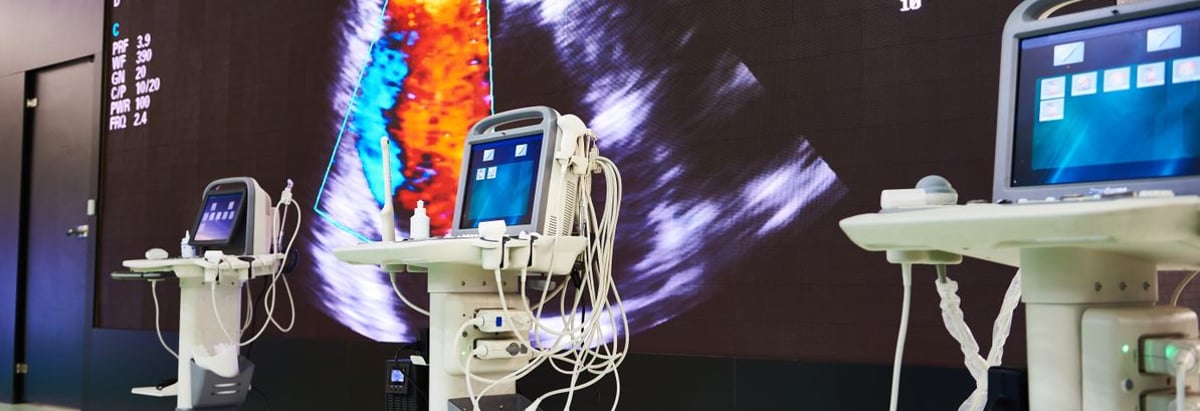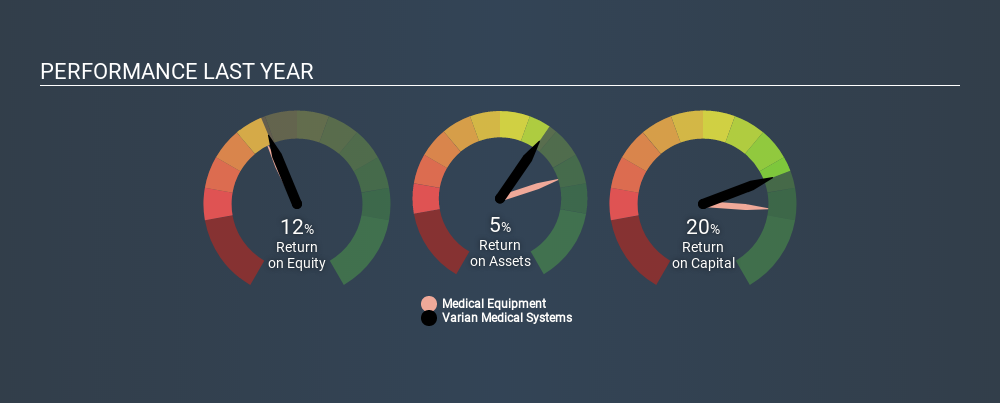
Today we are going to look at Varian Medical Systems, Inc. (NYSE:VAR) to see whether it might be an attractive investment prospect. To be precise, we'll consider its Return On Capital Employed (ROCE), as that will inform our view of the quality of the business.
First of all, we'll work out how to calculate ROCE. Second, we'll look at its ROCE compared to similar companies. Last but not least, we'll look at what impact its current liabilities have on its ROCE.
Understanding Return On Capital Employed (ROCE)
ROCE is a measure of a company's yearly pre-tax profit (its return), relative to the capital employed in the business. In general, businesses with a higher ROCE are usually better quality. Ultimately, it is a useful but imperfect metric. Renowned investment researcher Michael Mauboussin has suggested that a high ROCE can indicate that 'one dollar invested in the company generates value of more than one dollar'.
So, How Do We Calculate ROCE?
Analysts use this formula to calculate return on capital employed:
Return on Capital Employed = Earnings Before Interest and Tax (EBIT) ÷ (Total Assets - Current Liabilities)
Or for Varian Medical Systems:
0.20 = US$486m ÷ (US$4.3b - US$1.9b) (Based on the trailing twelve months to April 2020.)
So, Varian Medical Systems has an ROCE of 20%.
Check out our latest analysis for Varian Medical Systems
Does Varian Medical Systems Have A Good ROCE?
One way to assess ROCE is to compare similar companies. Varian Medical Systems's ROCE appears to be substantially greater than the 10.0% average in the Medical Equipment industry. We consider this a positive sign, because it suggests it uses capital more efficiently than similar companies. Setting aside the comparison to its industry for a moment, Varian Medical Systems's ROCE in absolute terms currently looks quite high.
You can click on the image below to see (in greater detail) how Varian Medical Systems's past growth compares to other companies.

When considering ROCE, bear in mind that it reflects the past and does not necessarily predict the future. ROCE can be deceptive for cyclical businesses, as returns can look incredible in boom times, and terribly low in downturns. ROCE is, after all, simply a snap shot of a single year. Future performance is what matters, and you can see analyst predictions in our free report on analyst forecasts for the company.
What Are Current Liabilities, And How Do They Affect Varian Medical Systems's ROCE?
Liabilities, such as supplier bills and bank overdrafts, are referred to as current liabilities if they need to be paid within 12 months. Due to the way the ROCE equation works, having large bills due in the near term can make it look as though a company has less capital employed, and thus a higher ROCE than usual. To check the impact of this, we calculate if a company has high current liabilities relative to its total assets.
Varian Medical Systems has total assets of US$4.3b and current liabilities of US$1.9b. As a result, its current liabilities are equal to approximately 45% of its total assets. Varian Medical Systems has a medium level of current liabilities, boosting its ROCE somewhat.
The Bottom Line On Varian Medical Systems's ROCE
Still, it has a high ROCE, and may be an interesting prospect for further research. There might be better investments than Varian Medical Systems out there, but you will have to work hard to find them . These promising businesses with rapidly growing earnings might be right up your alley.
I will like Varian Medical Systems better if I see some big insider buys. While we wait, check out this free list of growing companies with considerable, recent, insider buying.
Love or hate this article? Concerned about the content? Get in touch with us directly. Alternatively, email editorial-team@simplywallst.com.
This article by Simply Wall St is general in nature. It does not constitute a recommendation to buy or sell any stock, and does not take account of your objectives, or your financial situation. We aim to bring you long-term focused analysis driven by fundamental data. Note that our analysis may not factor in the latest price-sensitive company announcements or qualitative material. Simply Wall St has no position in any stocks mentioned. Thank you for reading.
Market Insights
Community Narratives



